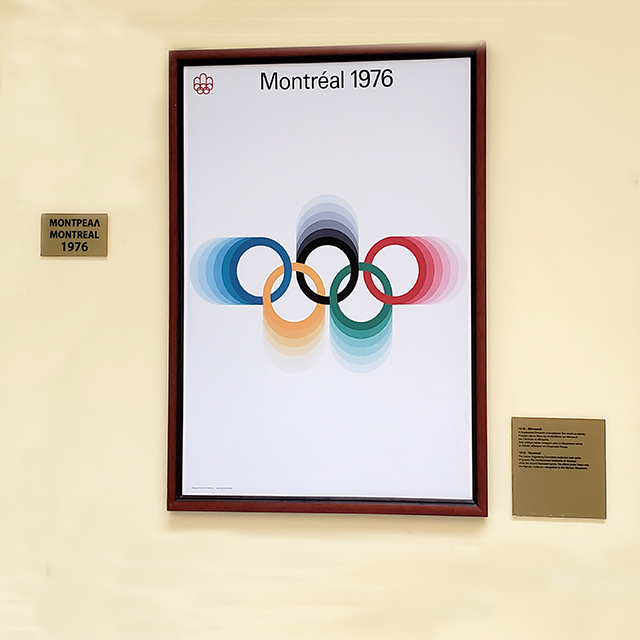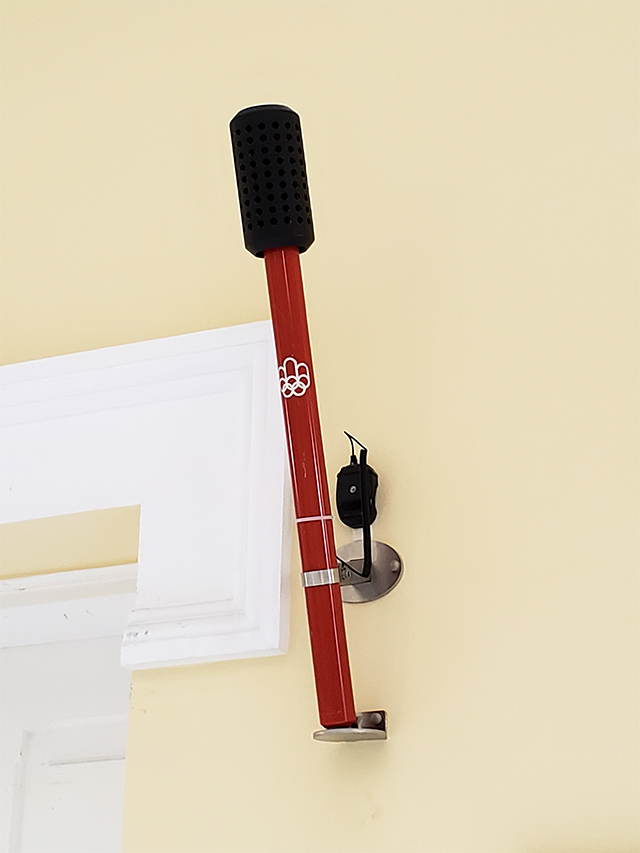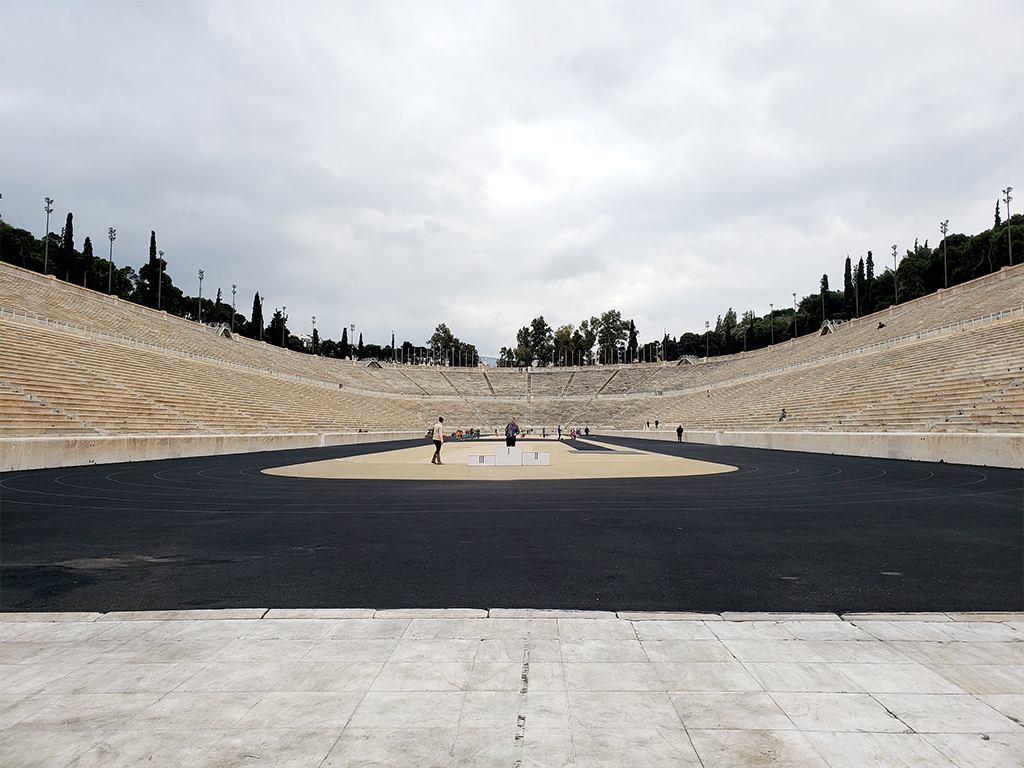
The Panathenaic Stadium in Athens dates to around 330 BC, when it began as a mere racecourse in a ravine between two hills. It was rebuilt in marble in 144 AD, then fell into disrepair for many centuries. It was restored again in marble for use as the primary venue for the first modern Olympics in 1896. The stadium also served as the finish line for the marathon in the 2004 Olympics.
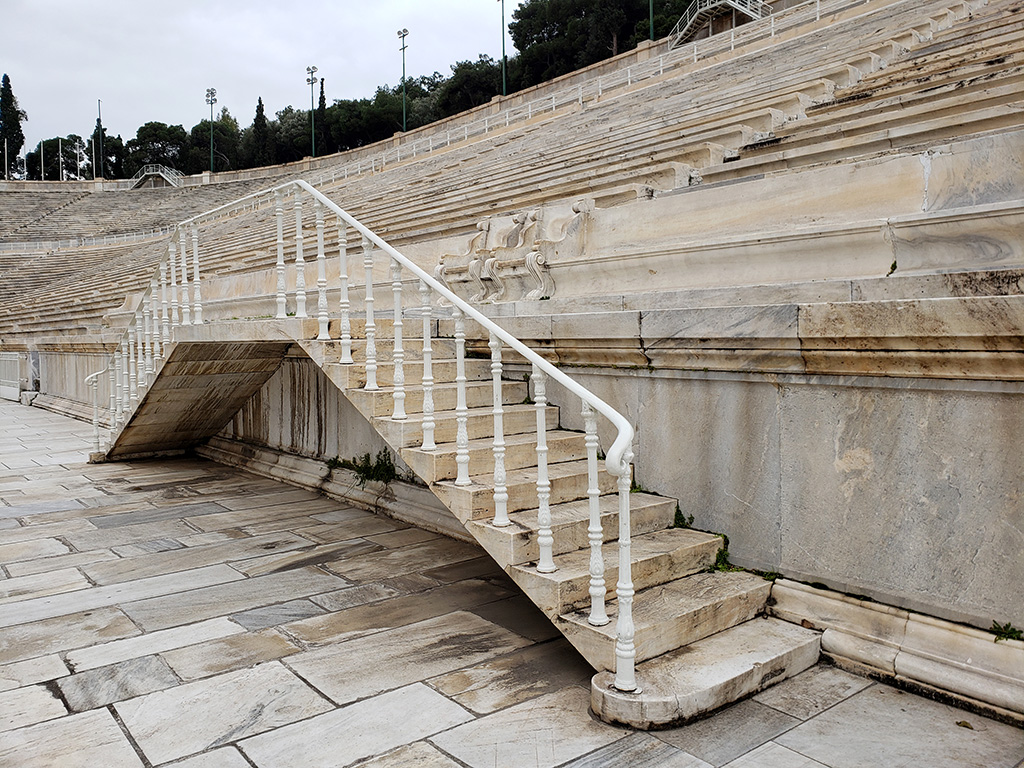
Stone tablets near the entrance are engraved with the medal winners from the first Olympics, and with ongoing lists of all host cities and Greek medal winners up to the present day.
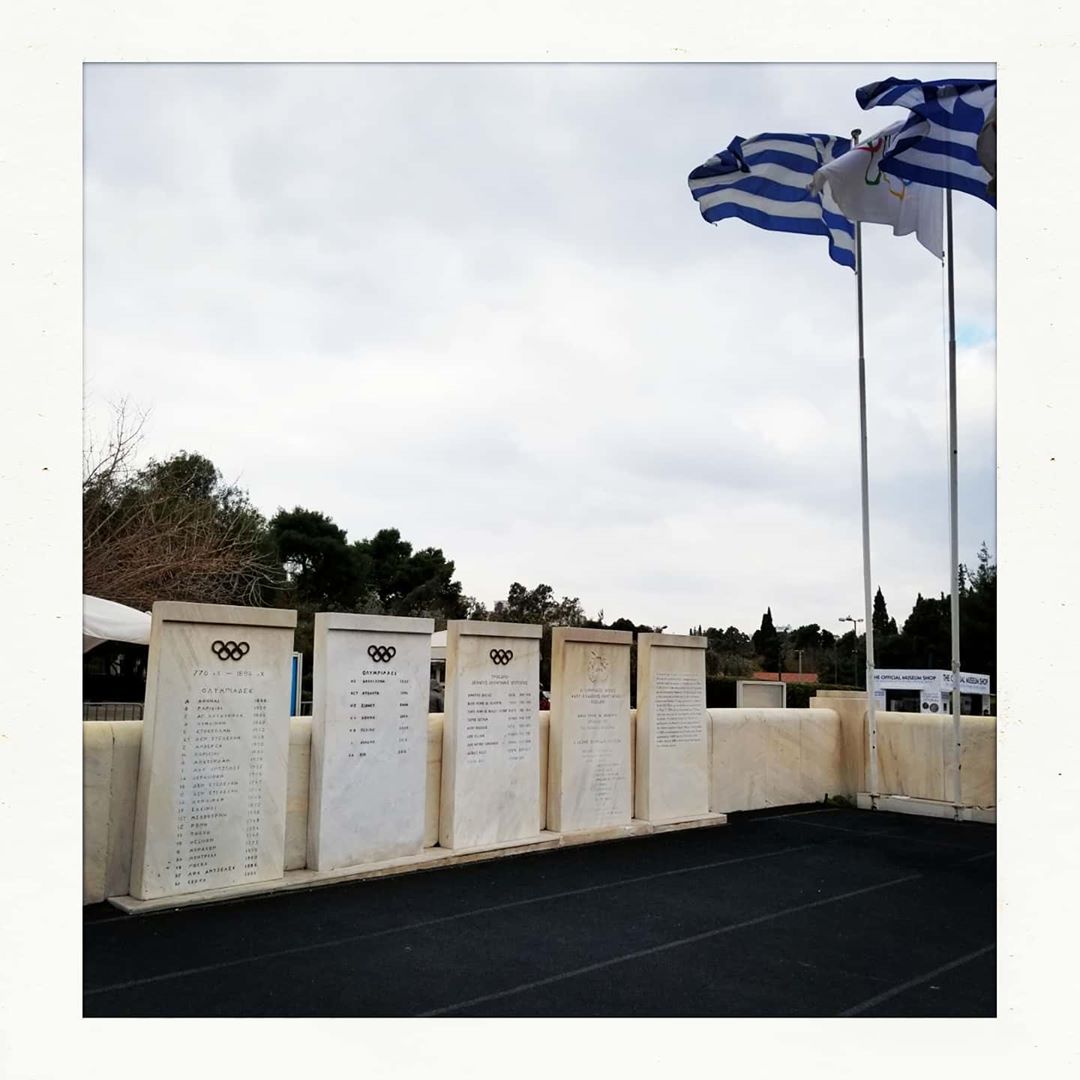
Access to the seats is via very steep marble stairs, in some parts so steep that I needed to use my hands to climb like a ladder.
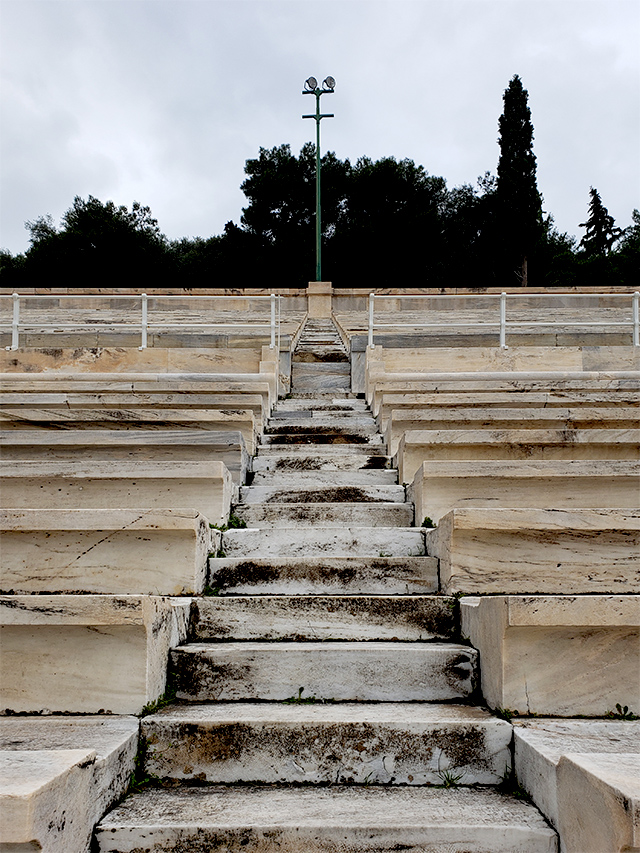
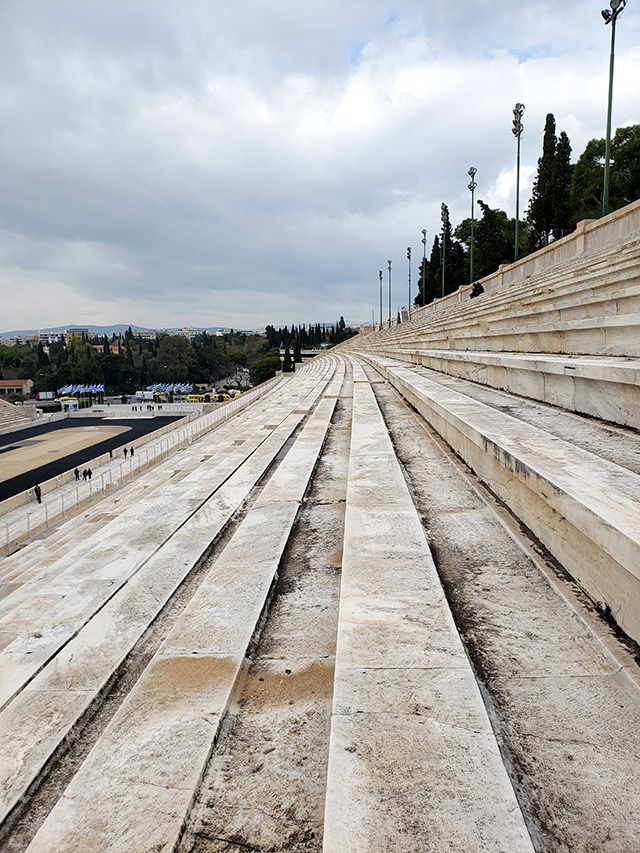
Everyone shares the same hard seat, except…
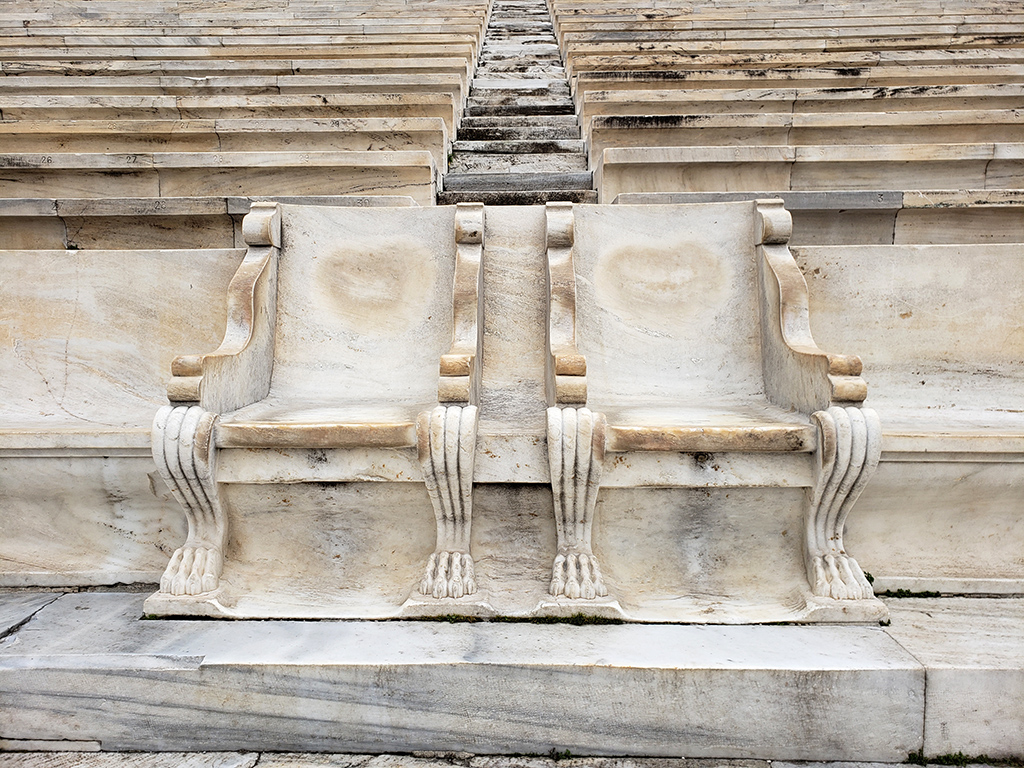
… the King gets a special ornate hard seat — plus a matching one for his best friend.
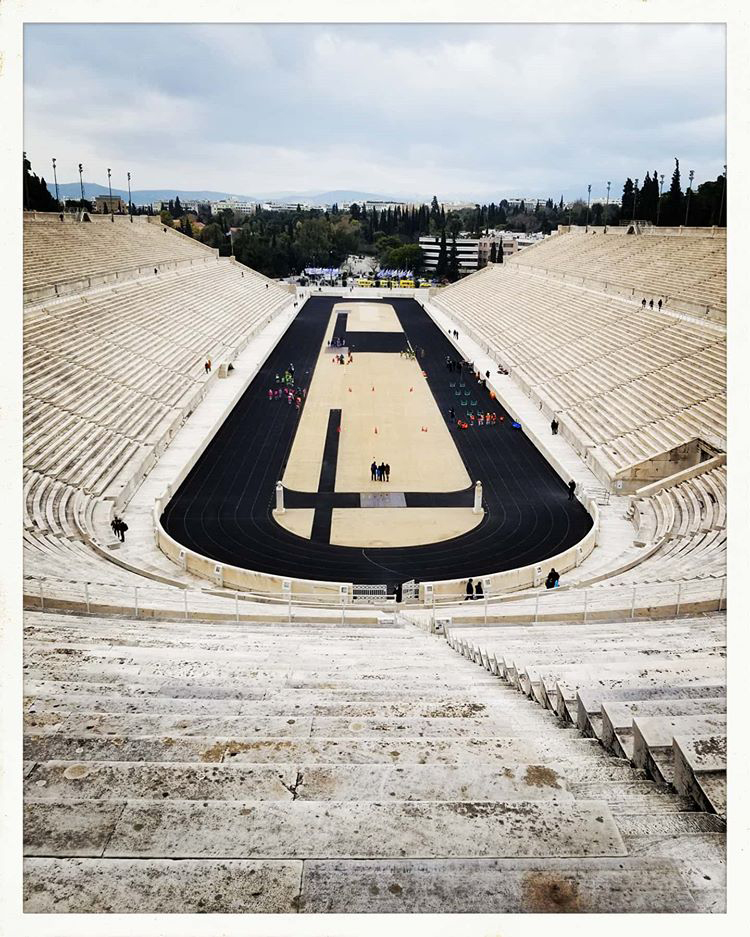
We climbed to the very top of the seats and circled around, to check out the views. It was the coldest day of our visit, barely touching 10 C with a light misty rain. This called for careful walking on the smooth marble. No handrails, this is Greece.
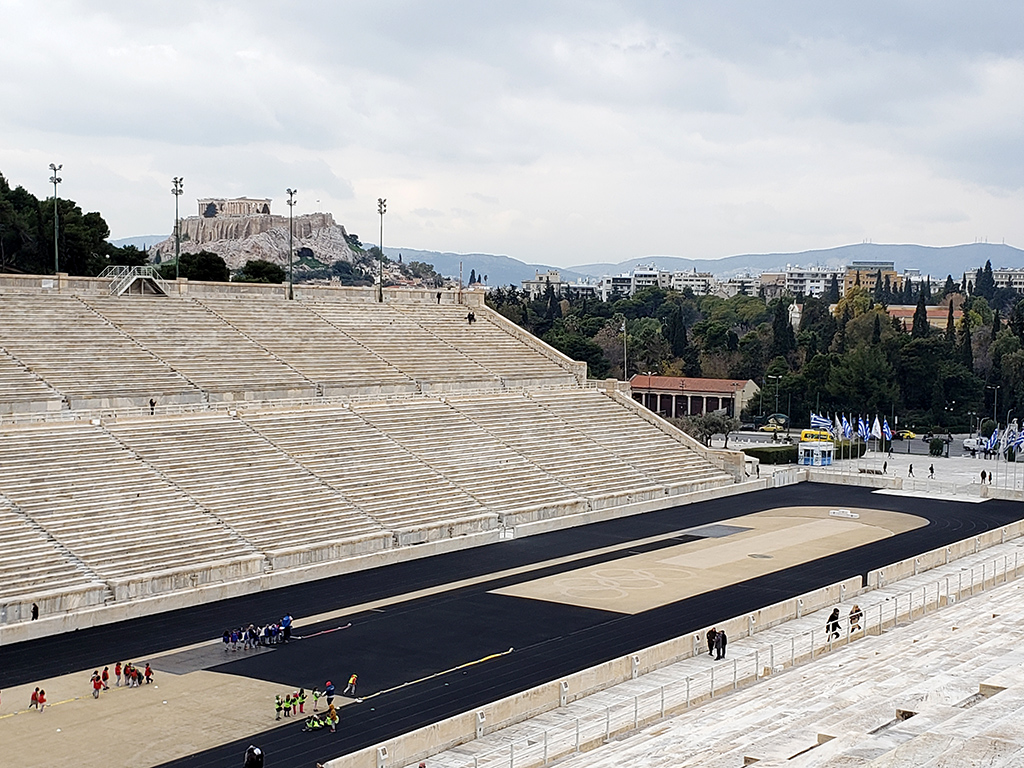
Of course there is a nice view of the Acropolis, starting around section 21. I wonder if they charged more for those seats?
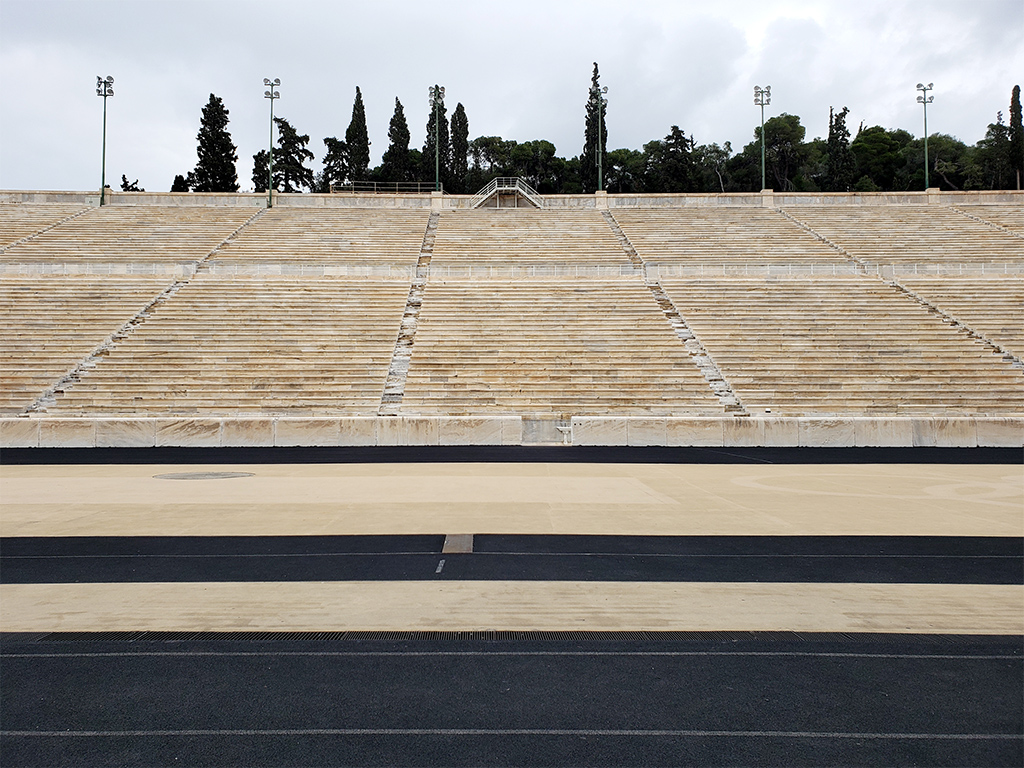
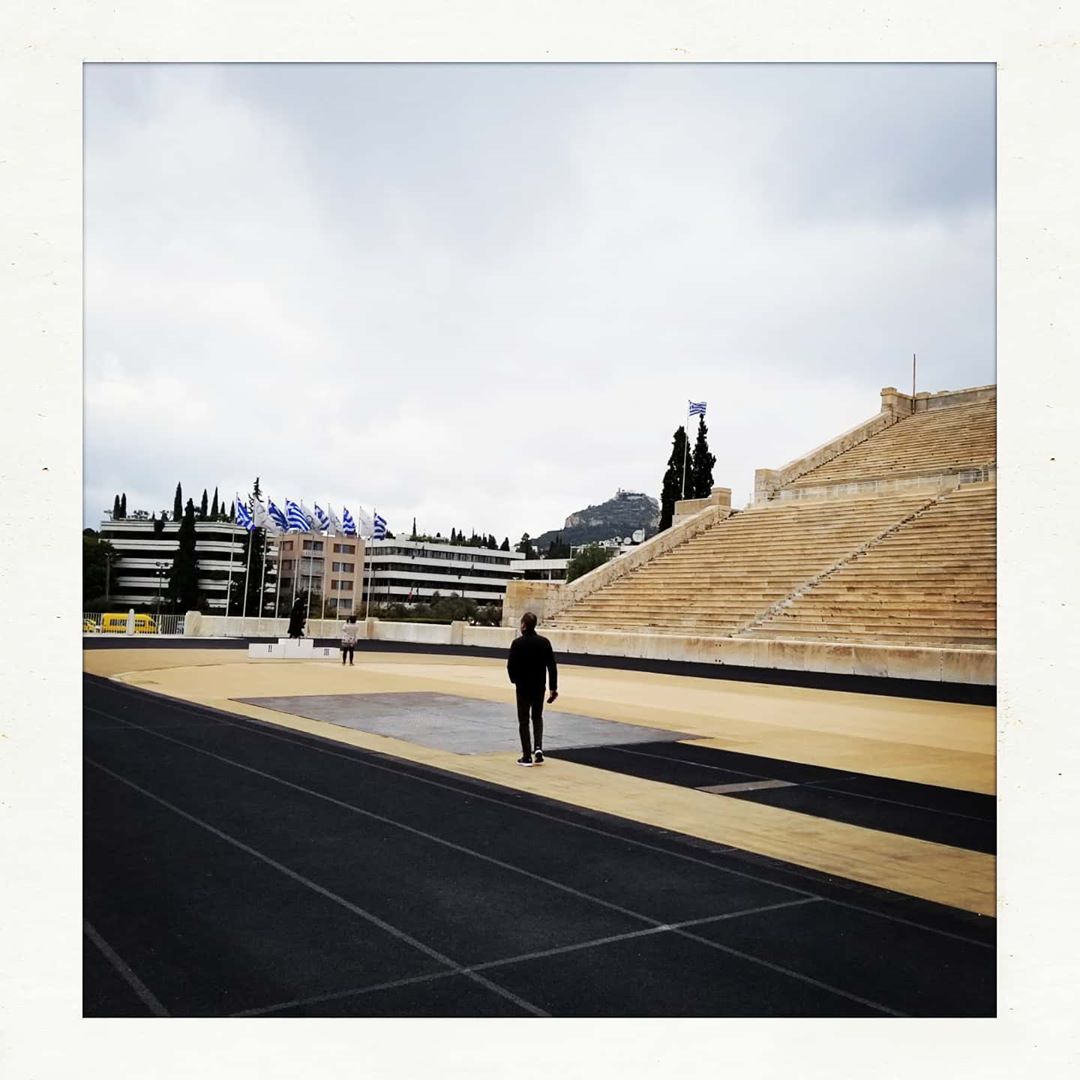
We were also able to wander on the well-maintained track surface. In warmer weather it is possible to go jogging in the stadium early in the mornings, before the regular visitor hours begin. While we were wandering a lucky group of young kids was having some sort of gym class or day camp in the stadium.
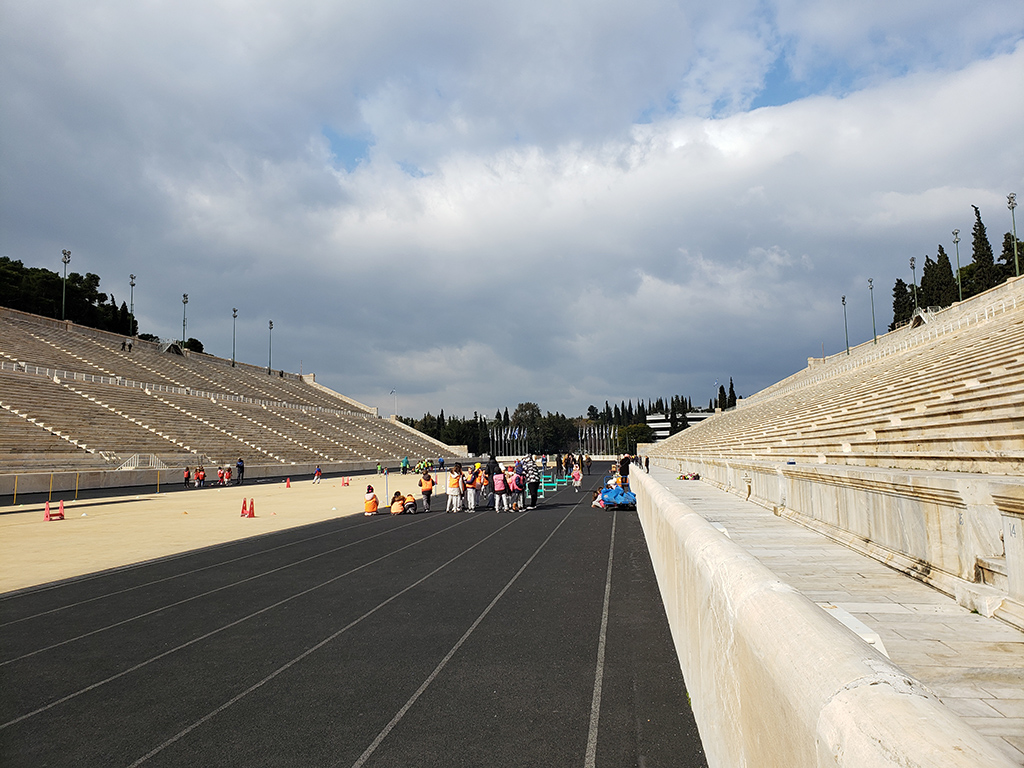
The sun finally came out — just as we were about to head into the darkness of the athletes tunnel. This is where the athletes would enter and leave the playing surface, and it seems to have been carved from solid rock.
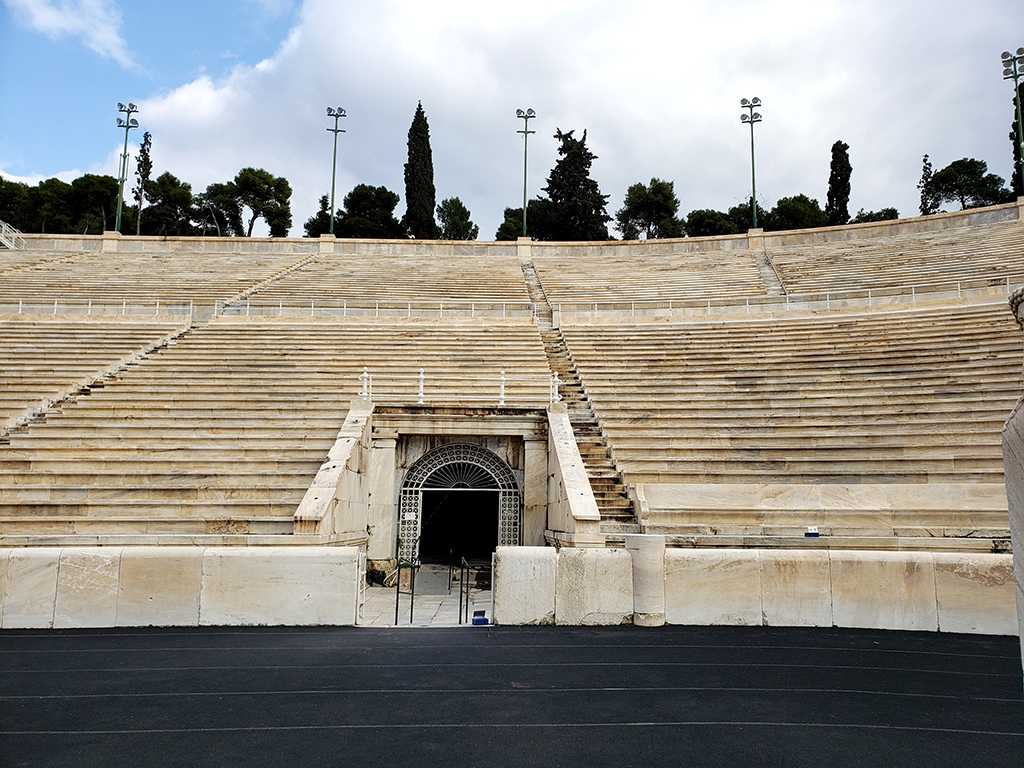
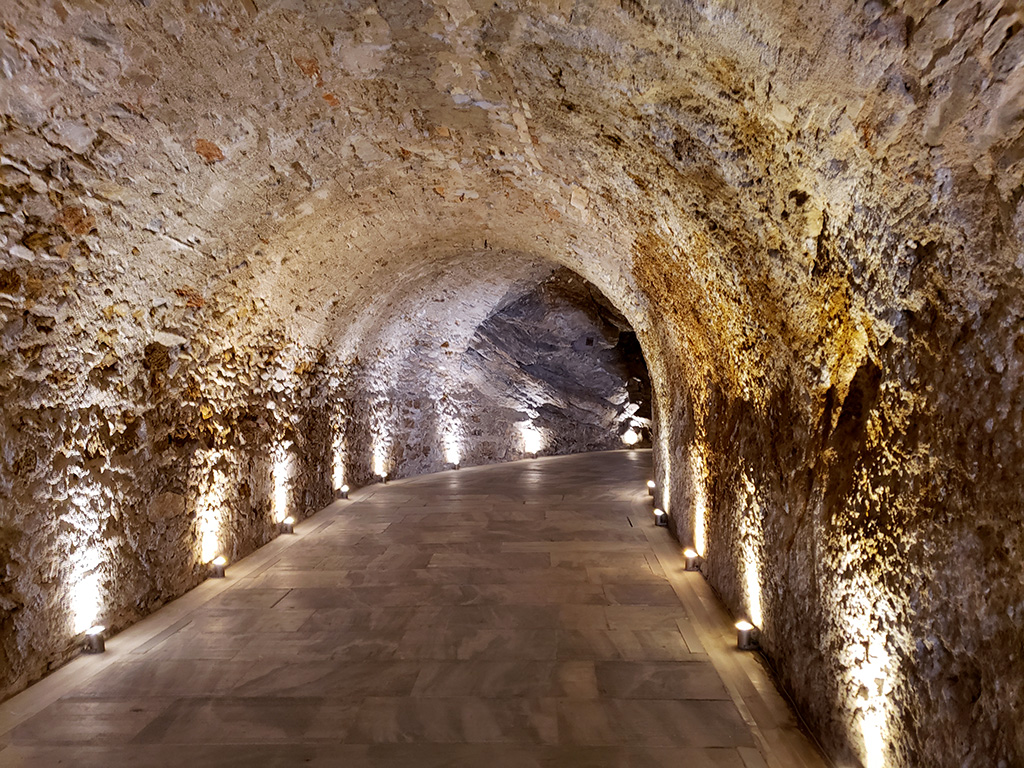
At the end of the tunnel is a quaint museum that highlights the role Greece plays in every Olympics, regardless of which country is hosting.
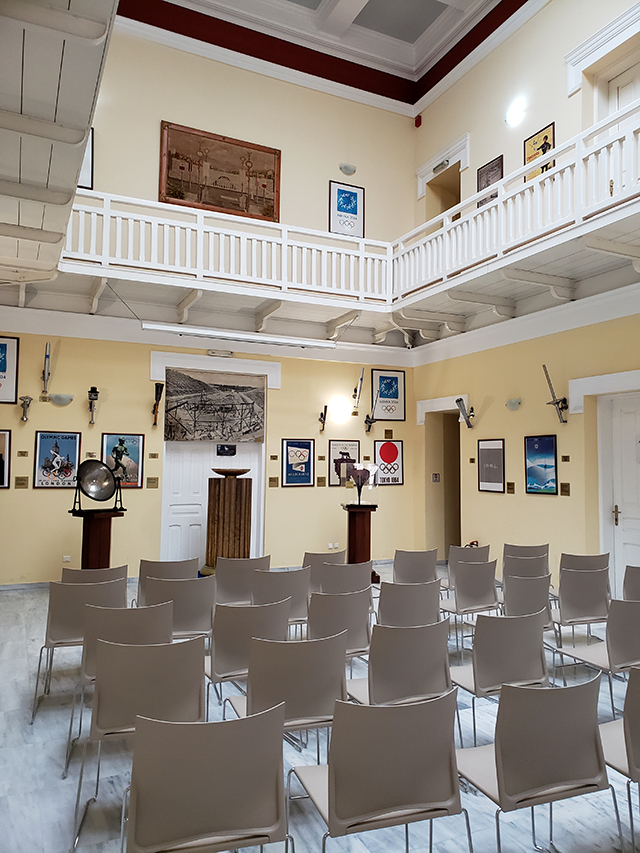
The original lighting of the Olympic flame always takes place in Olympia (about 250km west of Athens) but the final handover of the flame to the new host country happens in the Panathenaic Stadium after a torch relay.
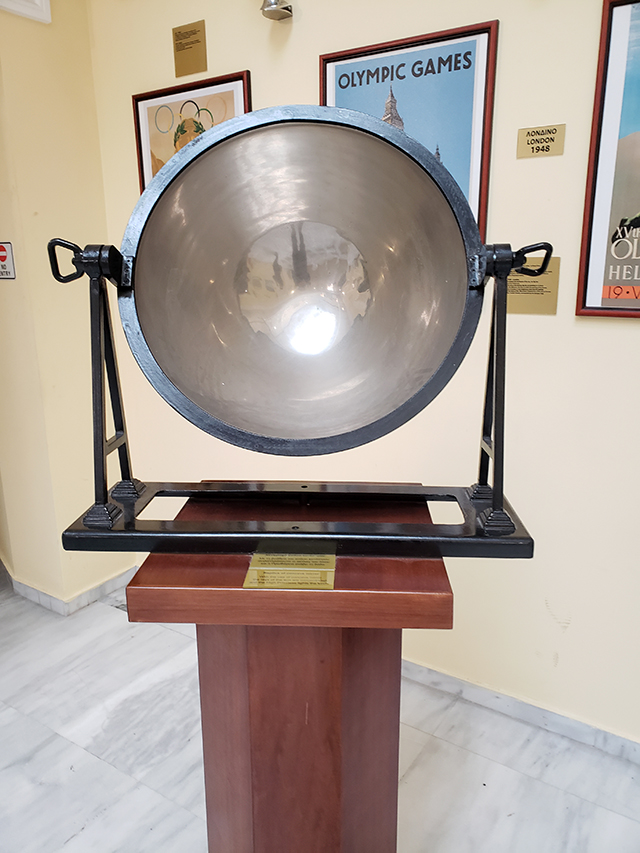
The plaque explains: “With the use of concave mirror the rays of the sun are concentrated and the High Priestess lights the torch.”
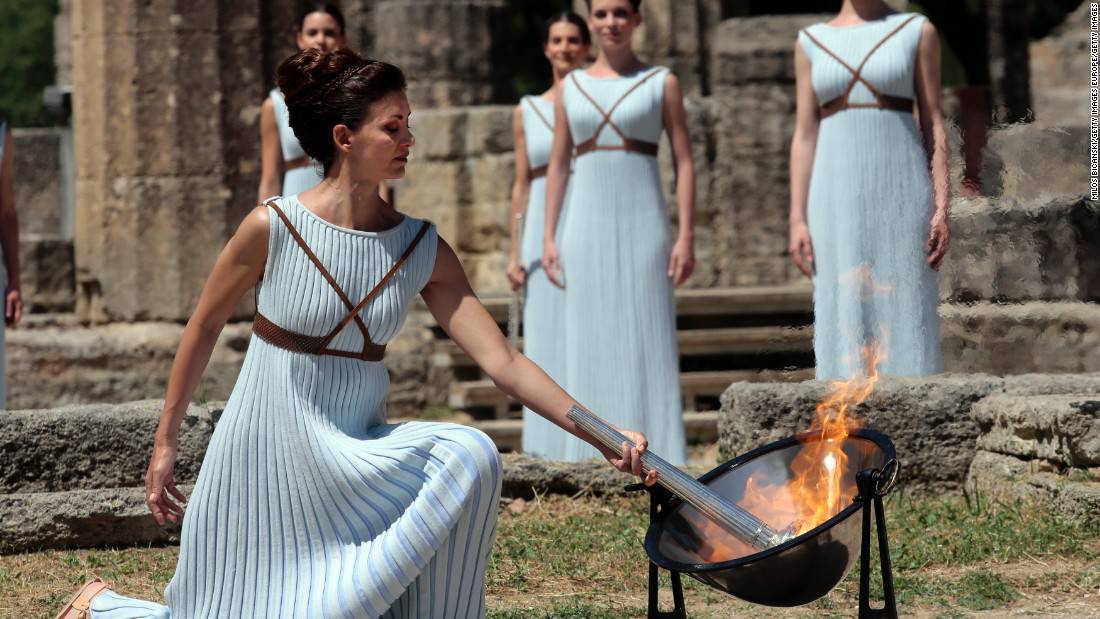
Around the walls of the museum were framed logos of all the Summer Olympics host cities, paired with the matching torches. Montreal’s retro offering has aged better than some.
